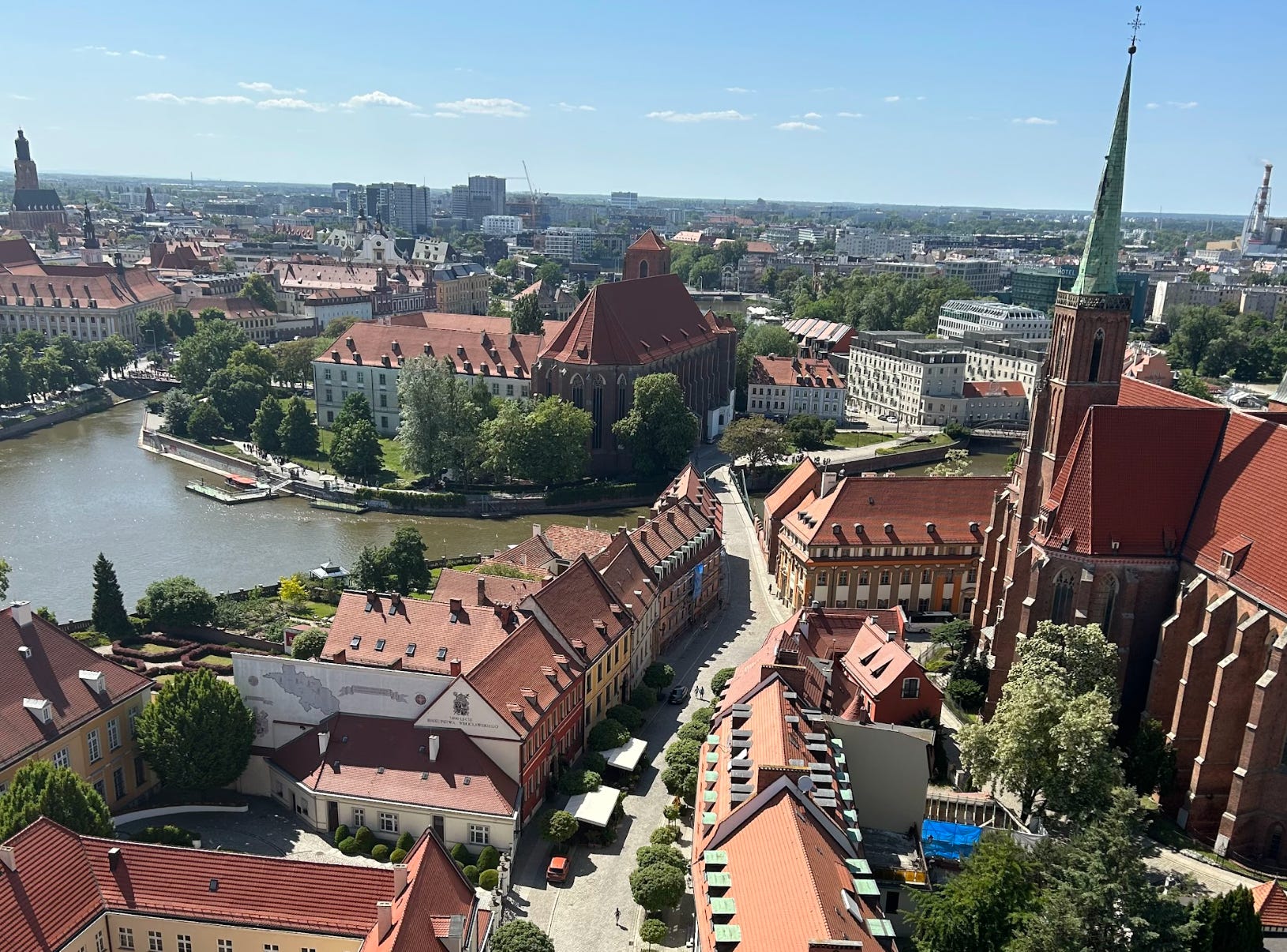
Nicole Harris Bocianski
Three years ago, I couldn’t have pointed to Wroclaw, Poland, on a map.
Then, after wandering its pastel-colored town square and devouring the best pierogies I’ve ever tasted, it became one of my favorite cities in Europe — and maybe even the world.
We never planned to visit Wroclaw, specifically. Shortly after getting married, my husband and I took a road trip through several European countries and wanted to stay somewhere near his father’s hometown in Poland. Wroclaw seemed to fit the bill.
Neither of us had heard of the city before. Our limited knowledge was based on YouTube videos and travel blogs we’d found before catching our flight across the Atlantic.
Surprisingly, though, the Polish city completely blew us away. We loved that it was quieter than Kraków (which we also visited) and replete with quirks, culture, and history.
The city is beautiful, with a town square that looks straight out of a storybook
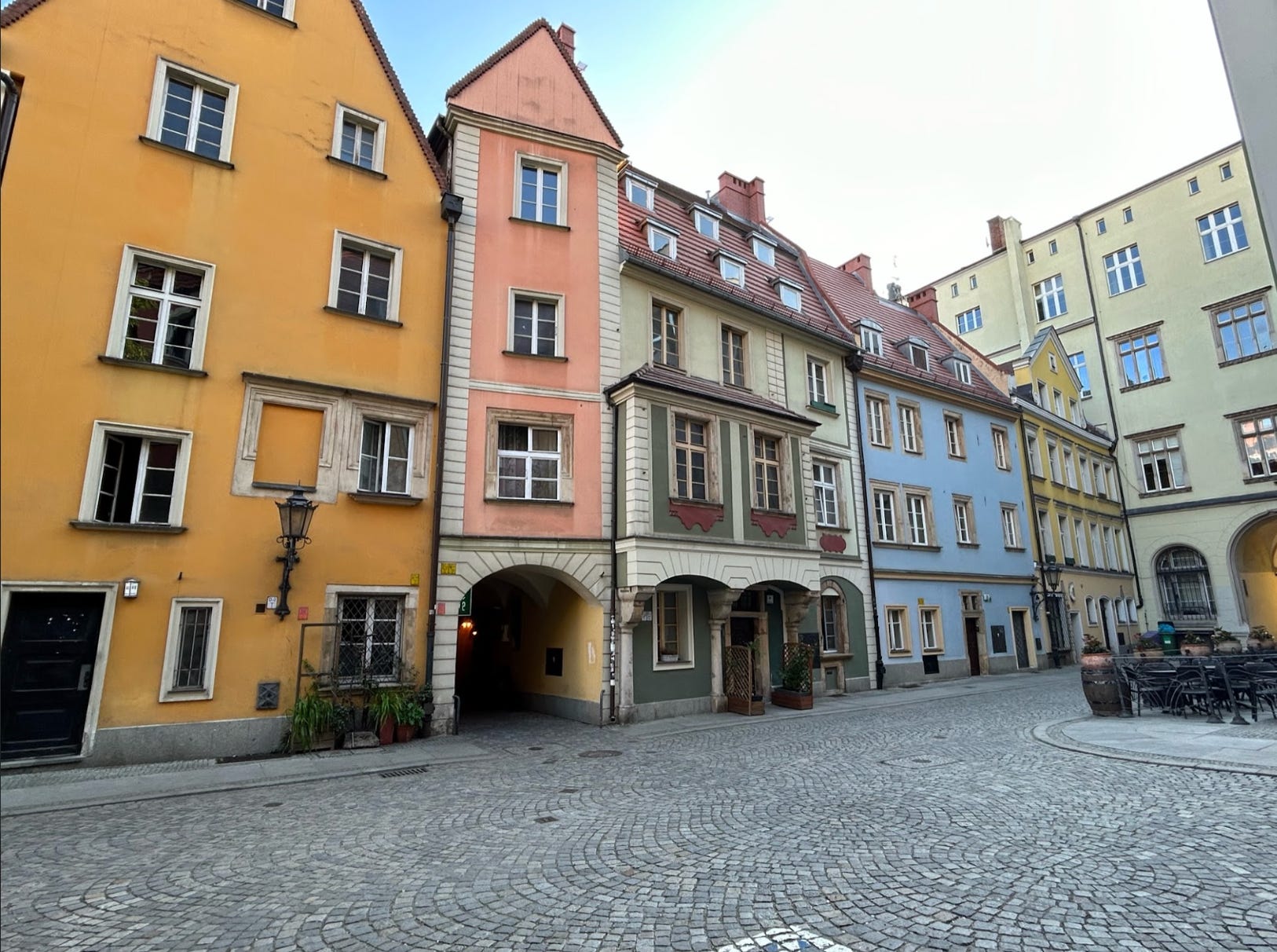
Nicole Harris Bocianski
Dating back to the 13th century, Wroclaw’s market square, Rynek, is the heart of the city. It’s also one of the largest town squares in Europe.
As we walked past colorful buildings, the old town hall, and lively cafés, my husband and I felt like we’d stepped into a fairytale.
The rest of the city was just as beautiful, too. We learned that most of Wroclaw was destroyed during World War II and has been meticulously rebuilt over the years.
The result is a stunning blend of old-world beauty and postwar revival, with plenty of Gothic churches thrown into the mix.
I explored stunning islands, bridges, and more
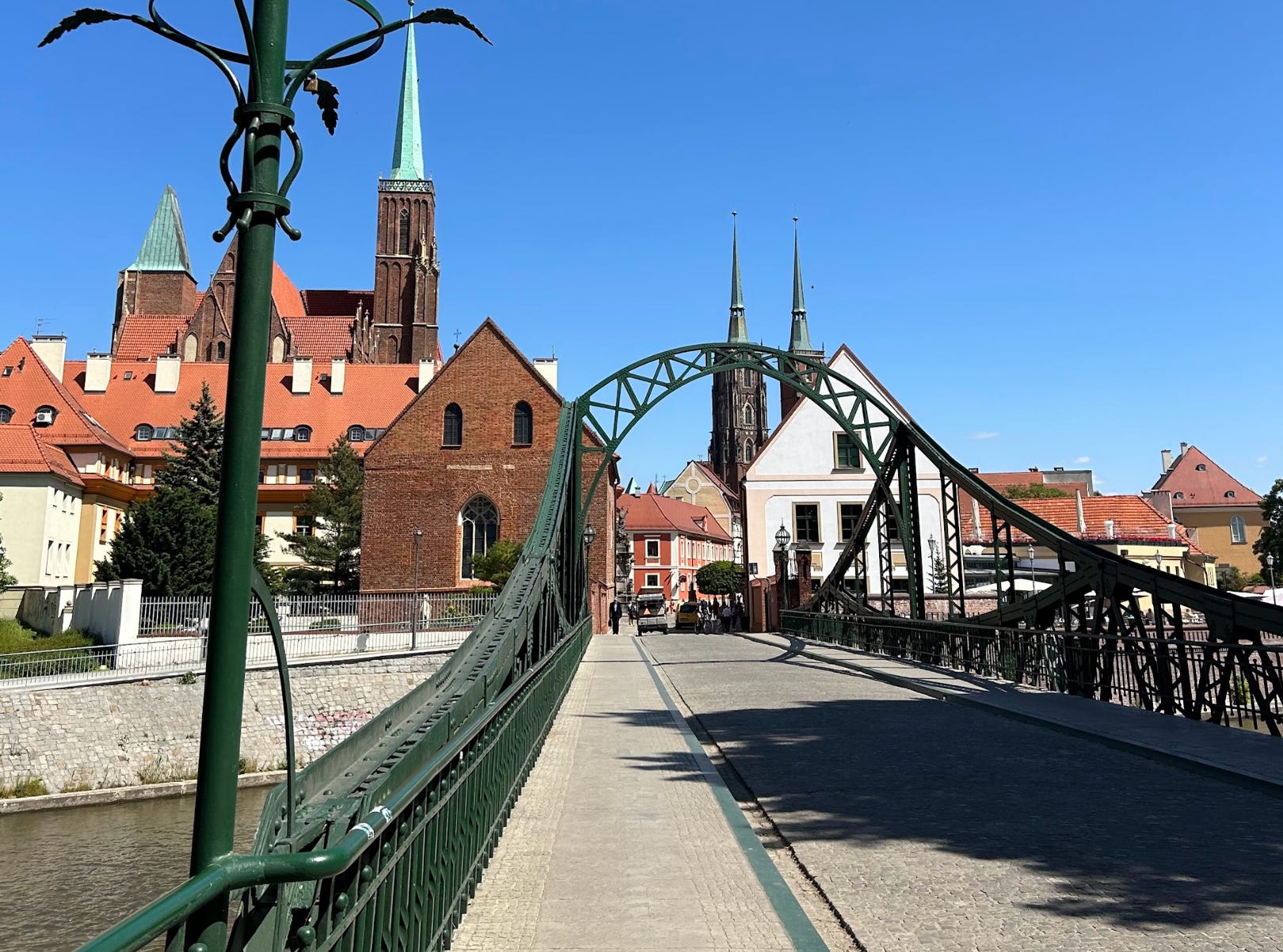
Nicole Harris Bocianski
On our trip, I learned that Wroclaw is nicknamed “the Venice of Poland.” It was easy to see why.
The city, which spans 12 islands, features picturesque waterways and 100 bridges, including the Tumski Bridge, where couples seal their love with a lock.
My favorite part of the city was also the oldest: Ostrów Tumski, or Cathedral Island. As the name suggests, it’s home to several churches, including the awe-inspiring Cathedral of St. John the Baptist.
There are so many unique quirks and traditions here
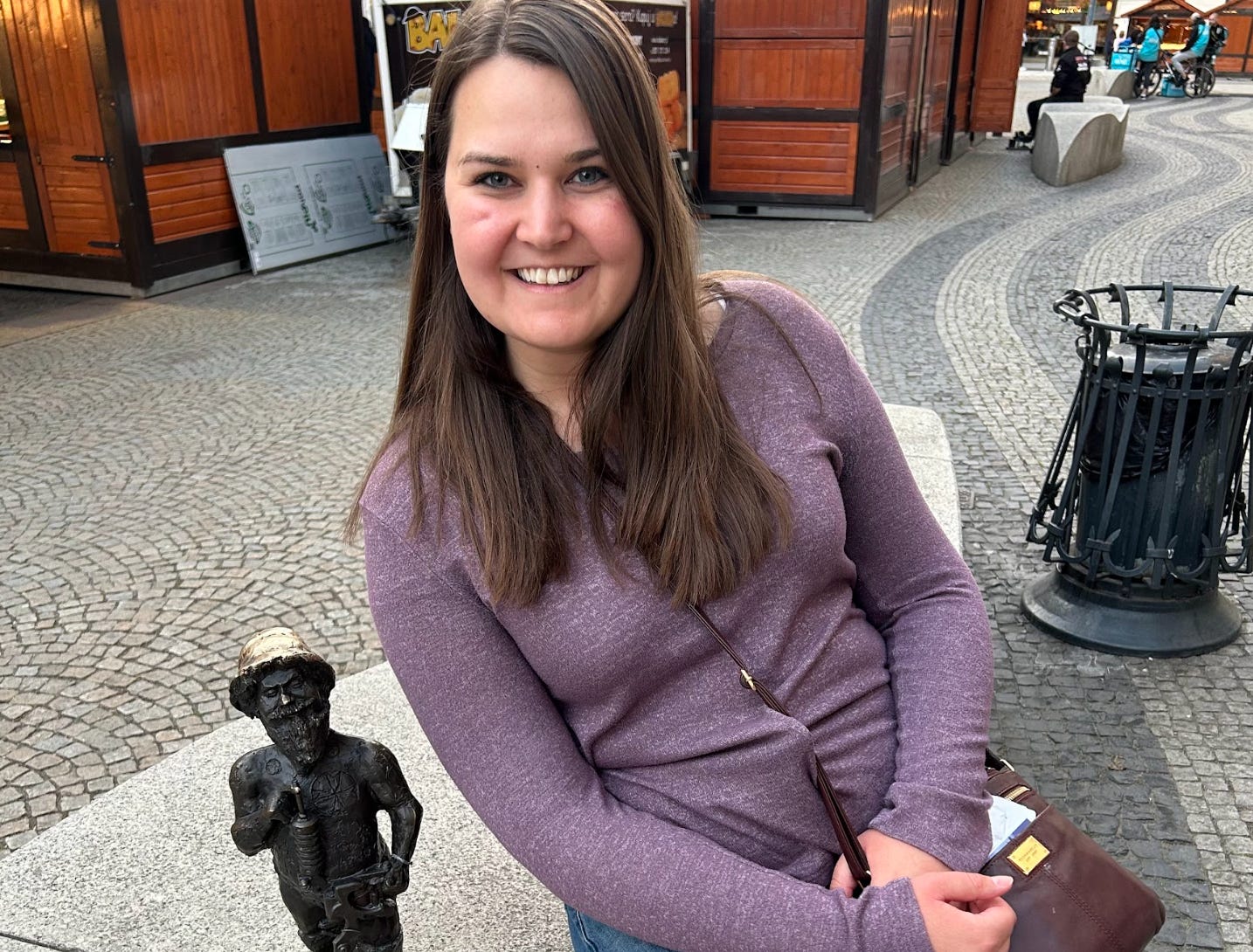
Nicole Harris Bocianski
I was delighted to learn that more than 600 miniature bronze dwarf statues (yes, miniature dwarves!) are hidden around the city.
Each dwarf has a story and personality: One is reading a book, another is riding a motorcycle, and others are baking croissants or fighting fires. We loved spotting them in unexpected places; it turned Wroclaw into a scavenger hunt.
Another cool part of the city is the cloaked lamplighter who manually lights and extinguishes gas lamps on Cathedral Island daily. I found this to be a cool nod to the city’s history that gave me a sense of what it was like here before electricity.
The food and culture were divine
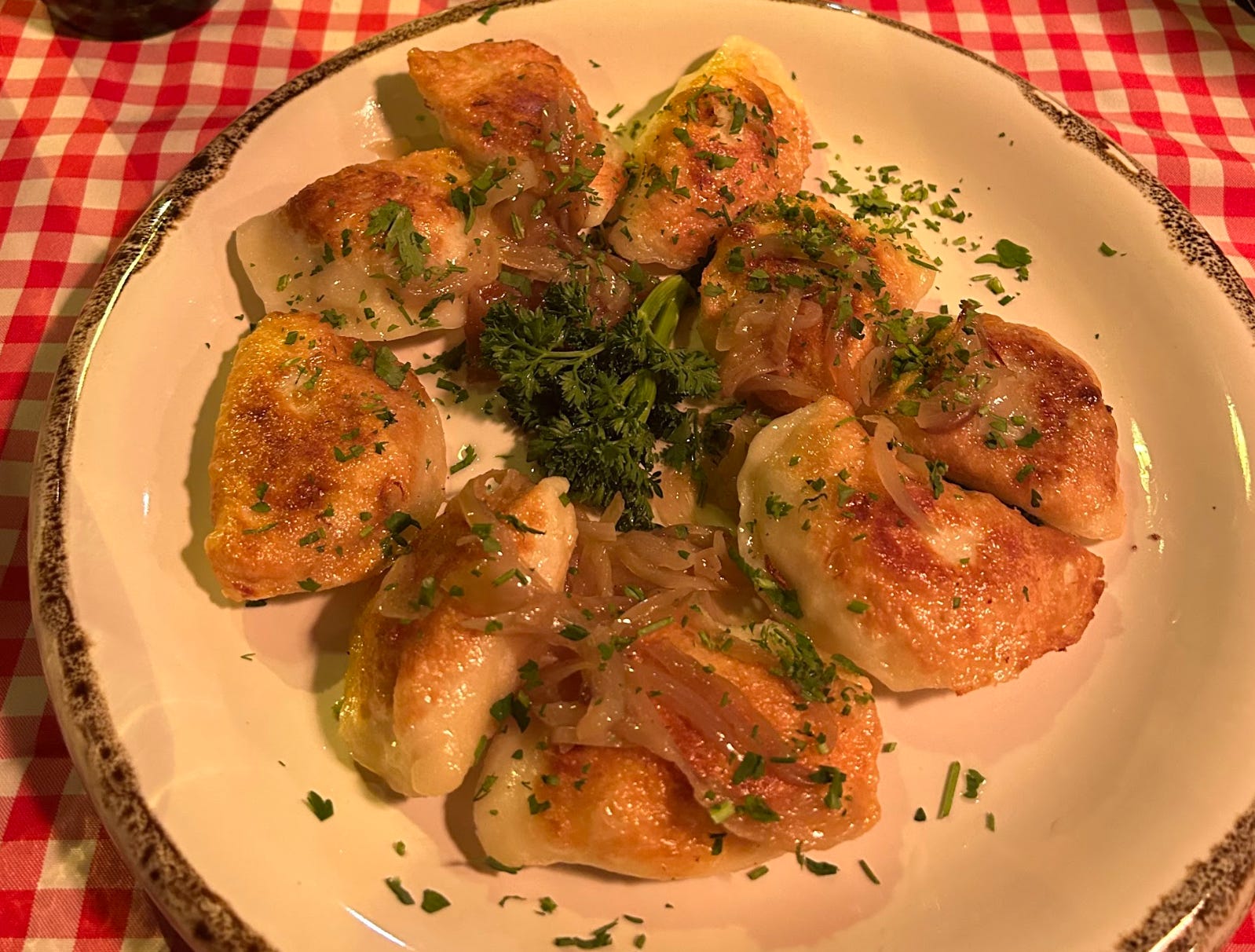
Nicole Harris Bocianski
We’ve traveled to over 20 countries, and Wroclaw had some of the best food we’ve eaten abroad.
Some of our favorite items were duck and potato pierogies, gołąbki (stuffed cabbage leaves), bigos (a meaty stew), placki ziemniaczane (potato pancakes), żurek (sour rye soup), and pączki (jelly doughnuts).
Oh, and don’t even get me started on the mouth-watering Polish beers.
There was also a lot to do besides exploring and eating. Wroclaw might not be as much of a tourist hub as some other European cities, but it has a vibrant cultural scene with museums, theaters, galleries, and more.
I recommend visiting the National Museum, which is packed with Polish and contemporary art, and the Racławice Panorama, a 360-degree painting depicting the Battle of Racławice. One of my favorite spots was Wrocław Market Hall with its stalls of fresh food and produce.
Chances are, you’ll walk away with an appreciation for Polish culture, history, and food — and maybe, like me, you’ll discover one of your new favorite places.
The post I’d never heard of the ‘Venice of Poland’ before I visited. Now, it’s the one European city I recommend to everyone. appeared first on Business Insider.




